Why the Amish Are Building America’s RVs
They’re forbidden from driving them, but not from making them.
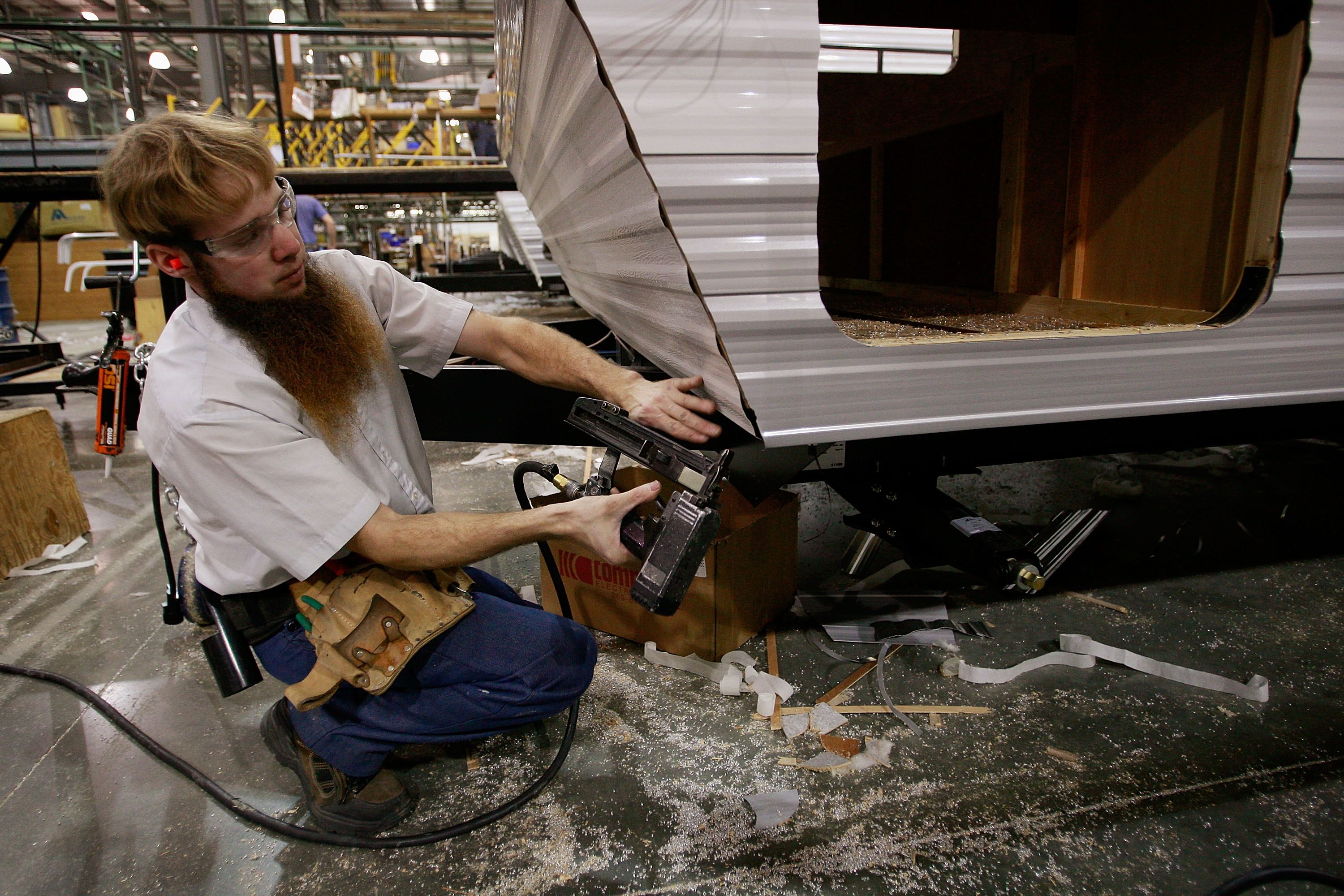
The Amish settlements of Nappanee and Elkhart-La Grange are less than an hour’s drive apart and both about a three-hour drive north of Indianapolis, Indiana. The flat, almost treeless landscape is home to horse stables and barns, white wooden houses, antiquated farming equipment and nearly 30,000 Amish. Regardless of the decade, these communities seem to remain constant in appearance.
Permissible technology for the Amish varies by community depending on the bishop—the local religious leader who determines the rules. Some, like Northern Indiana’s Amish, allow gas to power laundry machines and indoor lighting, or business owners to use cell phones and email at work. Generally, though, modern technology beyond work purposes is prohibited, and no matter how progressive the community, operating a motor vehicle, even for work, is out of the question.
But there’s more than meets the eye, and it only takes a bit longer in the region to take notice—the number of Recreational Vehicles (RVs) such as campers, fifth-wheel trailers, or motorhomes. Trailers are pulled behind trucks, and tour bus-sized coaches squeeze through the small-town streets.

According to the Recreational Vehicle Industry Association, RV manufacturing is a $50 billion business in the United States, employing nearly 300,000 Americans. Most of the RVs in America—80 percent—are made in Northern Indiana.
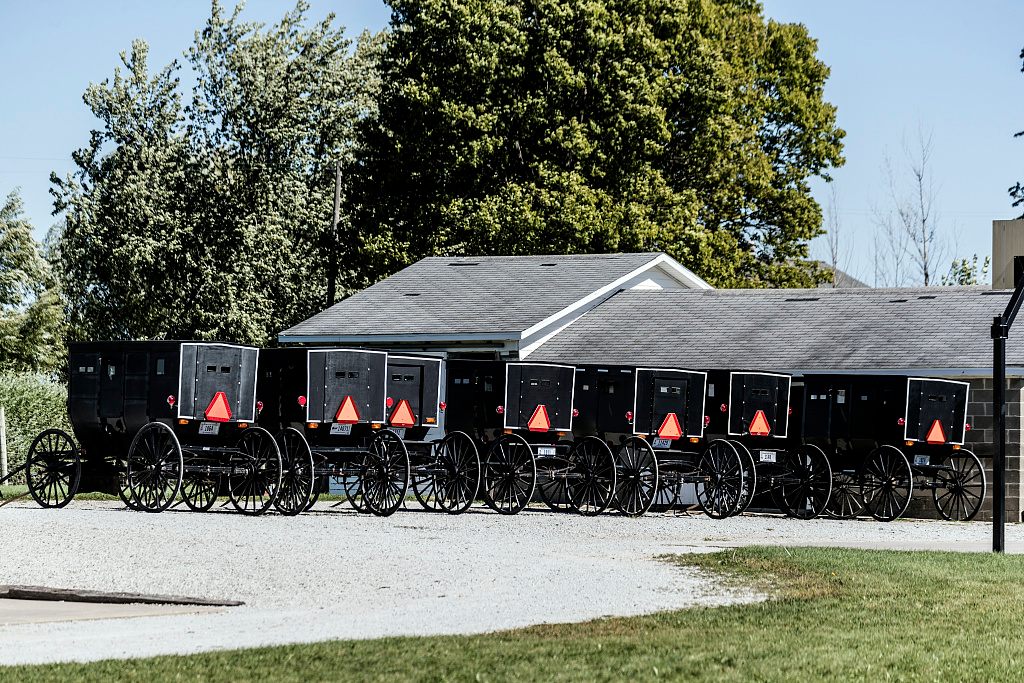
The Amish in this region don’t just live near the RV epicenter—they’re building the vehicles. According to Steve Nolt, Senior Scholar at the Young Center for Anabaptist and Pietist Studies at Elizabethtown College, most of the Amish men under 65 work in factories. The majority of these manufacturing plants either assemble RVS or supply parts such as cabinets or windows.
Such increased Amish involvement in the non-Amish workplaces has had irrevocable consequences on their community. In the PBS documentary American Experience: The Amish, Donald B. Kraybill even called the shift the “most significant and the most consequential change since they came to North America.”
Unlike other Amish communities across the U.S., Northern Indiana Amish have always had some relationship to the outside world. After they came to the region in the 1840s, they didn’t live in such close proximity to non-Amish as they do now, but they were never isolated.
When most Amish men were farmers, it was common for them to work seasonally with non-Amish in town, on more traditional things like cabinet making or carpentry, or even making cigar boxes, boats and band instruments. Nolt, who conducted interviews in the late ‘90s with Amish workers in the boat-making industry, said interviewees pointed to the fact that making the wooden boats was similar to wood working.
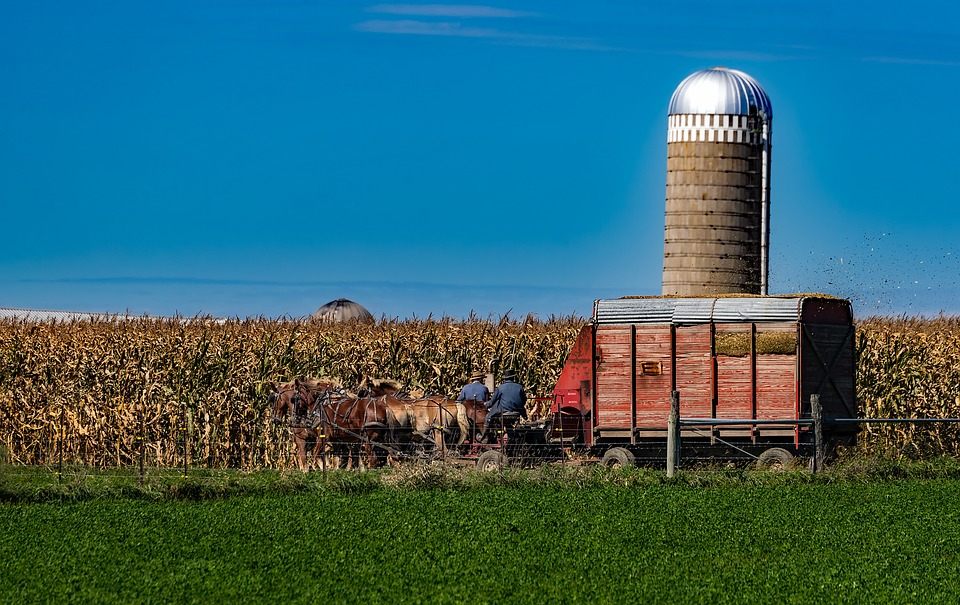
So when Milo Miller started the first RV manufacturer in Elkhart County in 1933, it wasn’t out of the realm for Amish to begin participating in the seasonal work it offered—something Nolt explained was an “already established pattern that seemed inviting.” And there were a lot of chances to participate in this industry. Miller’s company quickly started to attract more suppliers and manufacturers to the region. By 1948, Elkhart County had already been dubbed the “RV Capital of the World” and continued to supply America’s post-war demand for affordable recreation.
Yet, how did the RV situation shift from a comfortable, seasonal job for some of the Amish, to employing 56.3 percent of men in the Nappanee settlement and 53 percent in the Elkhart-LaGrange settlement, according to Nolt’s data?
The big reason, says Nolt, is what he called an “economic squeeze and demographic crisis,” a shift in the 1980s that pushed the Amish (and other farmers across the country) from the farms into the factory. By the time the 1980s Farm Crisis hit, Amish families had already grown larger and larger,and there were fewer opportunities for them to own land. Today, most people who own farms inherited them. Buying land and farming is not only out of most people’s price ranges, but it’s a tough business to compete with America’s mega-farms.
The strong RV industry provided jobs for Northern Indiana’s Amish once farming was no longer a plausible option. Year-round, Amish men go into work at 4:00-5:00am, riding into town in a bike or buggy, and working until they complete their day’s quota. The faster they work, the sooner they go home. In Newmar’s Nappanee factory, for example, once workers finish eight RVs, they’re done for the day. Some might not even have to work a full eight-hour day, and wages are relatively high—reported to be around $4,000 a month and up.
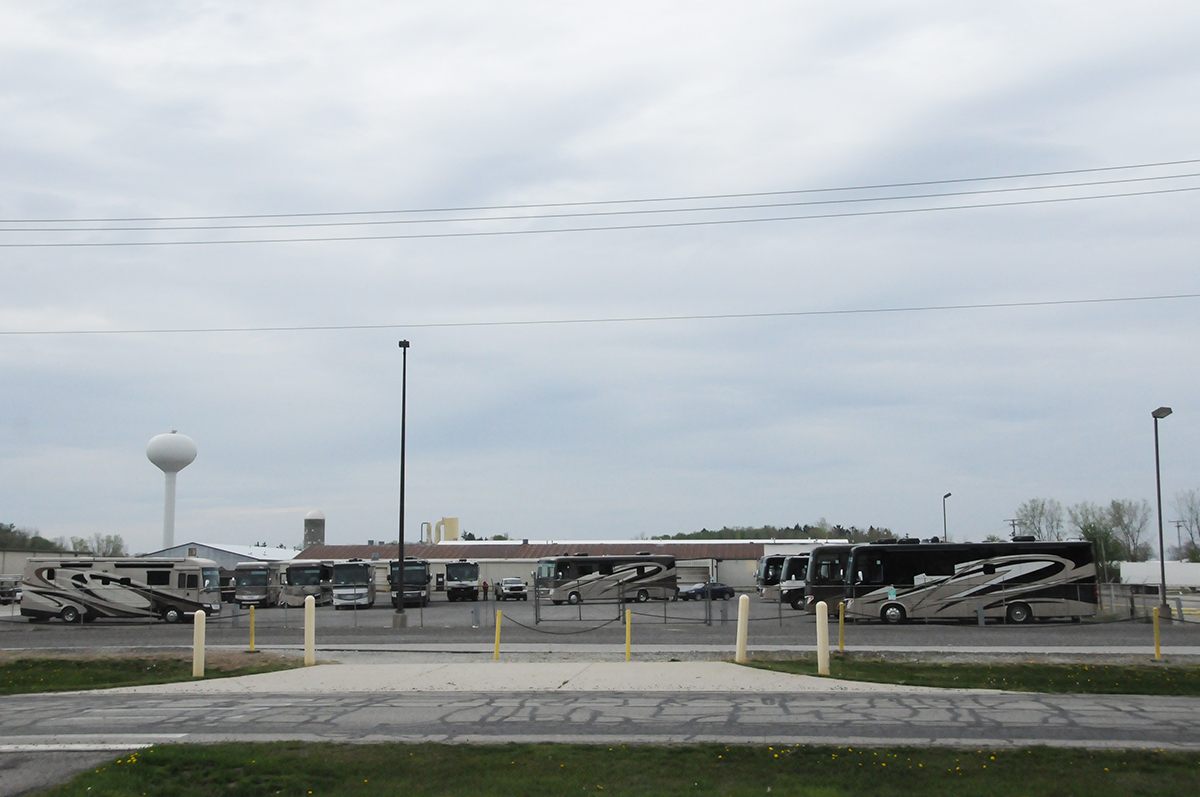
The more the factory work immerses the Amish in the outside world, though, the more they struggle to find a place to thrive economically while holding onto their values. The transition from occasional seasonal work to the majority of men working in factories has created a cultural conflict that few anticipated.
“The good thing is they put a lot of meat on the table and feed a lot of families,” says Ola Yoder, the Amish CEO of Kountry Wood Products and a former factory worker. The change it’s caused is “tremendous, and I’m not sure if it’s a good thing.” Born in an Amish community in Arthur, Illinois, he moved to the Nappanee settlement over four decades ago when he heard the factory jobs were paying “a big $5” an hour. Now, it’s upwards of $15.00.
Although many believe the high factory wages create a fairer society—the rate forces Amish businesses to pay competitive rates, otherwise they’d lose employees to RV industry—others allude to the potential for problems. Two of the Amish’s most important values are humility and equality, but Amish factory workers now speak openly about wages and compare them often. With their increased salaries, they buy bigger boats and advanced hunting equipment, stirring a subtle hierarchy.
Erik Wesner, author of Success Made Simple: An Inside Look at Why Amish Businesses Thrive and the man behind the popular blog Amish America, has written about local perceptions of the industry. Wesner explains that given the volume of manufacturers in the region, it’s hard to generalize one workplace over the other, but Amish have three major concerns with the industry: money, work environment, and stress. Compared to traditional farm work, “it’s a fast-paced environment, it’s stressful, there’s swearing, stories about drugs,” says Wesner. “By the nature of the work, you have to be sharp and on your toes.”
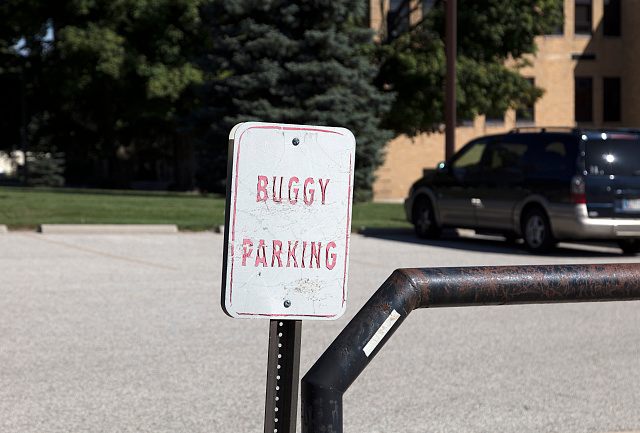
M. Yoder, an Amish man who works in a trailer factory in Shipshewana, said he doesn’t “like getting mad at all” but he can’t help but feel the pressure of the adrenaline. He’s had arguments with his superiors. The speed required has also made him wasteful–it’s easier to throw away excess materials in a time crunch than put them back where they belong.
L. Yoder would rather be working on his apple orchard or taking care of his bee colonies, but to be able to pay his high mortgage (a trade-off he made to be able to live on expensive property close to friends and family) he feels like he has no other choice than to work in the factories.
The RV industry in northern Indiana has long been a benefit to the local communities, Amish and non-Amish, as well as depended on the strong workforce the region provided. The Amish factory workers, who otherwise would never have contact with motor vehicles, are doing fast-paced physical labor and reaping the economic benefits, but not without a cost. Less time on the fields means more time with families and more money means the ability to buy expensive land—something that the community is grateful for. The critics, though, are quick to point out their skepticism. They have to ask, says Ola Yoder, “Where’s this going to end up at?”





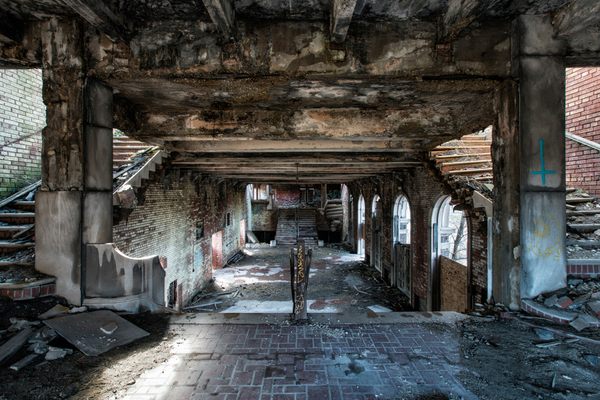



Follow us on Twitter to get the latest on the world's hidden wonders.
Like us on Facebook to get the latest on the world's hidden wonders.
Follow us on Twitter Like us on Facebook